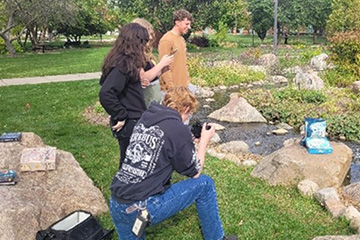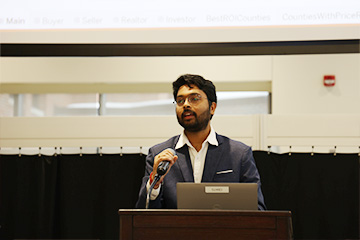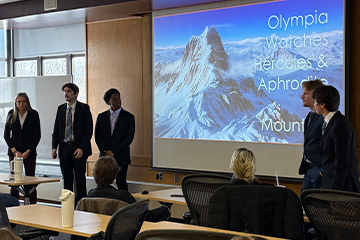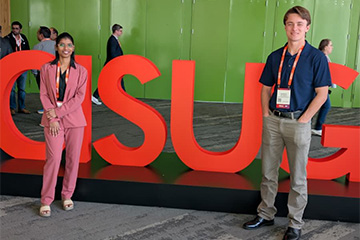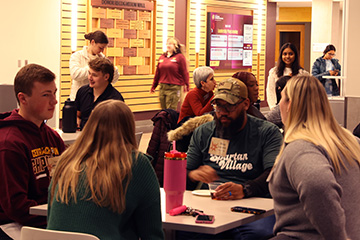Building global connections through collaborative learning
Faculty-led collaboration with German university creates intercultural learning opportunities for students on both sides of the Atlantic
When James Melton traveled to Karlsruhe, Germany, this spring, he wasn’t just teaching a class—he was helping build a bridge.
The professor of business communication taught a hybrid graduate-level course on intercultural business communication at Hochschule Karlsruhe University of Applied Sciences. He spent one week on site teaching four-hour classes, followed by seven weeks of synchronous online sessions.
“It was kind of an innovative way of doing it,” Melton said. “They were adaptable, and it worked great.”
Course content and impact
Melton’s class focused on intercultural communication in professional settings. The German students—master’s students in communication media management—designed training programs to help engineers work across cultural boundaries.
“Their final project was, you need to train German engineers to work with Americans in the business context,” Melton said. “They came up with these training programs and made videos and podcasts and all kinds of stuff.”
Encouragement for this kind of project, he added, came before class even started: “On the plane I was sitting next to a German engineer who worked with U.S. companies in Michigan. She asked me what I was doing, and when I told her about my class, she said, ‘We need to do that in my company.’”
Collaborative Online International Learning
The course also included a Collaborative Online International Learning (COIL) experience linking CMU students with their German peers.
“I had 25 interns that I supervised for applied business communication at CMU,” Melton said. “The German students had an assignment to interview two of these American interns about their internship experience. That fit perfectly because the German students were trying to understand American workplace culture.”
For CMU students, the exchange provided international perspective without leaving campus. For German students, it was a chance to test classroom theory against real-world examples.
“There were some recurring patterns and themes,” Melton said. “Some of them were even different from what the books said they should expect. It was fun to see those discoveries.”
Building on international relationships
This opportunity grew out of relationships with Fulbright scholars who studied at CMU and returned to Germany, helping create an ongoing partnership with Karlsruhe University.
Hochschule Karlsruhe highlighted Melton’s visit on its website (translated from the original German):
“The course conveyed central models and concepts of intercultural communication, including the Communication Process Model, Cultural Intelligence (CQ), and Erin Meyer’s Culture Map. A highlight was the practical application: students developed their own training program for intercultural communication aimed at professionals and executives.”
The collaboration is already sparking ideas for future exchanges, including workshops, expanded COIL projects, and study abroad opportunities.
“I would like this to develop into something where they could bring some students here, and we could bring some students there,” Melton said. “There’s a lot of potential.”
Why it matters
For Melton, these connections are about more than just course content.
“I think COIL really is a way to create that opportunity for CMU students who are on campus,” he said. “Sometimes you take a jump to study abroad but not everybody’s ready to do that yet. COIL is a good way of taking that initial step and developing those relationships.”
By fostering connections across borders, CMU strengthens its international relationships and prepares students for success in a global workforce.
“It’s important to have those conversations,” Melton said. “I think it breaks down assumptions and helps you see cultural differences more accurately. And once students do it, they come out saying, ‘That was great. I had a really good experience.’”
